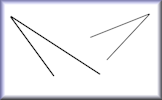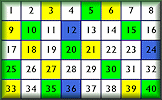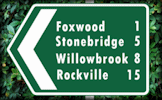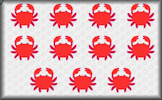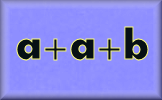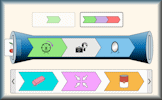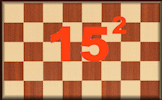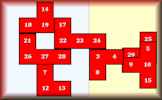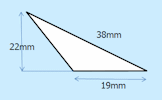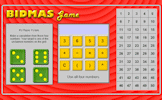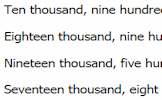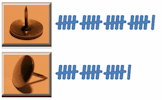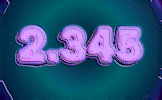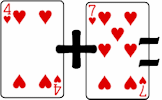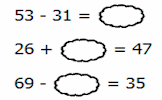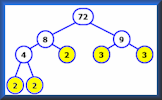
Think of a Number
Ten students think of a number then perform various operations on that number. You have to find what the original numbers were.
Try It!
Area and Perimeter of a Rectangle
Questions on the areas and perimeters of rectangles which will test your problem solving abilities.
Try It!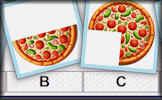
Fraction Foundations
Recognise simple fractions (halves, quarters and tenths) of whole numbers and shapes.
Try It!
Position Practice
Use words for position and direction including left, right, in front, behind, under and above.
Try It!
Fifteen
A strategy game. Play against the computer to select three numbers that add up to 15.
Try It!
Coins and Notes
Sharpen your money management skills by accurately calculating sums and working out change.
Try It!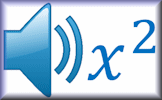
Writing Expressions
Listen to the voice saying the algebraic expression then write it in its simplest form.
Try It!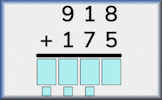
Column Method for Addition
Practise your addition skills with this exercise that already has the calculation set out for you.
Try It!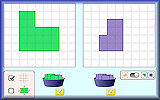
Area Builder
An interactive workspace in which to make shapes using square tiles with given areas and perimeters.
Try It!
Basic Subtraction
A self-marking exercise on subtraction with increasing levels of difficulty.
Try It!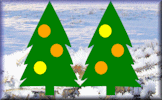
Xmas Tree Trim
Use the lights provided to decorate each of the Christmas trees so that no two trees are the same.
Try It!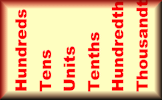
Place Value
Enjoy this exercise to show you understand place value for decimals and numbers of any size.
Try It!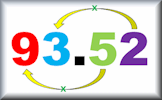
The Value of Places
Test your understanding of place value by comparing the values of digits in different positions within numbers.
Try It!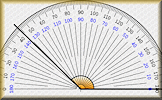
Measuring Angles
Measure the size of the given angles to within two degrees of their actual value.
Try It!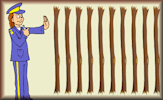
The Subtraction Game
This basic version of Nim is a mathematical game of strategy in which players take turns removing sticks from a pile.
Try It!
Fast Factors
Match the numbers with the answer to the times table. A timed activity to improve instant recall of key table facts.
Try It!
BIDMAS
A self marking exercise testing the application of BIDMAS, an acronym describing the order of operations used when evaluating expressions.
Try It!
Basic Multiplication
A self-marking exercise on multiplication with increasing levels of difficulty.
Try It!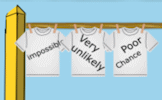
Probability Washing Line
Hang out the washing on the line so that the probability words on the t-shirts are in order.
Try It!
Mental Strategies
Practise your mental arithmetic skills and learn some new strategies with this self marking exercise.
Try It!
Xmas Lights
Drag the lights onto the positions indicated on the tree. Arrange the lights so that no two consecutive numbers are joined by a wire.
Try It!
Number Crunch Saga
A lively numeracy game requiring you to align three numbers to create the given target sum or product.
Try It!
Basic Division
A self-marking exercise on dividing numbers of up to four digits by one or two-digit whole numbers using the formal written methods of short and long division
Try It!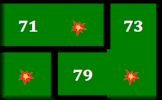
Prime Numbers Jigsaw
Interactive jigsaw puzzles of different types of grids containing prime numbers.
Try It!
Area and Perimeter of a Parallelogram
Many different ways to practise your skills finding the areas and perimeters of parallelograms.
Try It!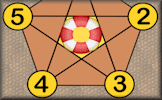
23 or Bust
A game involving mental arithmetic and strategy for two players or one player against the computer.
Try It!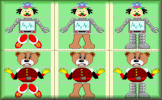
Misfits
A Misfit is a character with a head, body and legs. How many different Misfits can you create?
Try It!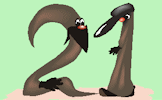
Pairs Twenty One
Find the pairs of numbers that add up to 21 in this collection of matching games.
Try It!
Fraction Line
Arrange the fractions, shown in a variety of formats, in order from smallest to largest.
Try It!
Online Psychic
Let the psychic read the cards and magically reveal the number you have secretly chosen. What is the mathematics that makes this trick work?
Try It!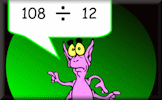
Quotientmaster
A fast-paced activity to help you practise a Times Table by developing an ability to quickly recall quotients.
Try It!
Snowflake Generator
See how the hexagon can be transformed into a snowflake with some basic translations.
Try It!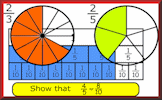
Equivalent Fractions
Practise finding equivalent fractions numerically and in fraction diagrams.
Try It!
Addle
Arrange the numbers from 1 to 14 in the spaces to make the sums correct. How fast can you do it?
Try It!
Equivalent Fraction Pairs
The traditional pairs or Pelmanism game adapted to test knowledge of equivalent fractions.
Try It!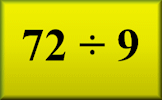
Division Master
How quickly can you answer times table questions presented the wrong way round?
Try It!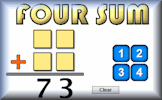
Four Sum
Arrange the given number tiles to make two 2 digit numbers that add up to the given total.
Try It!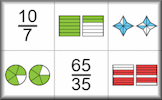
Fraction Matcher
Match shapes and numbers in this fractions activity. Challenge yourself on many levels.
Try It!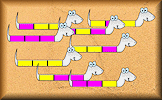
Snake Sort
Sort the coloured snakes in a logical order. This activity introduces systematic listing.
Try It!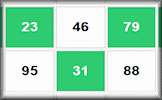
Prime Path Pace
The objective is to find a continuous path of prime numbers in the shortest time.
Try It!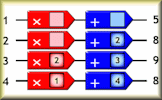
Brainbox
A puzzle requiring the arrangement of numbers on the function machines to link the given input numbers to the correct output.
Try It!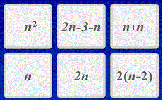
Algebra Pairs
The classic Pelmanism or pairs game requiring you to match equivalent expressions.
Try It!